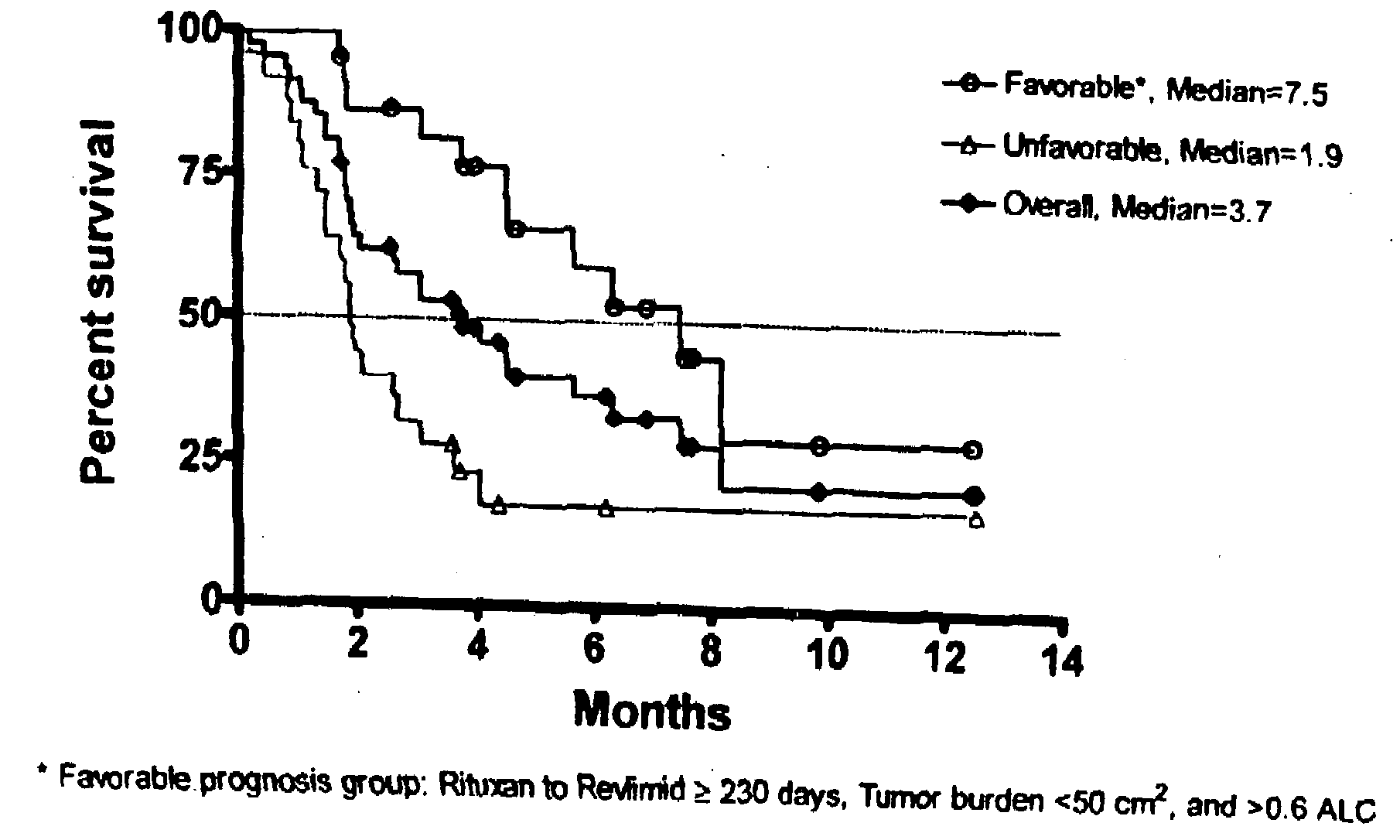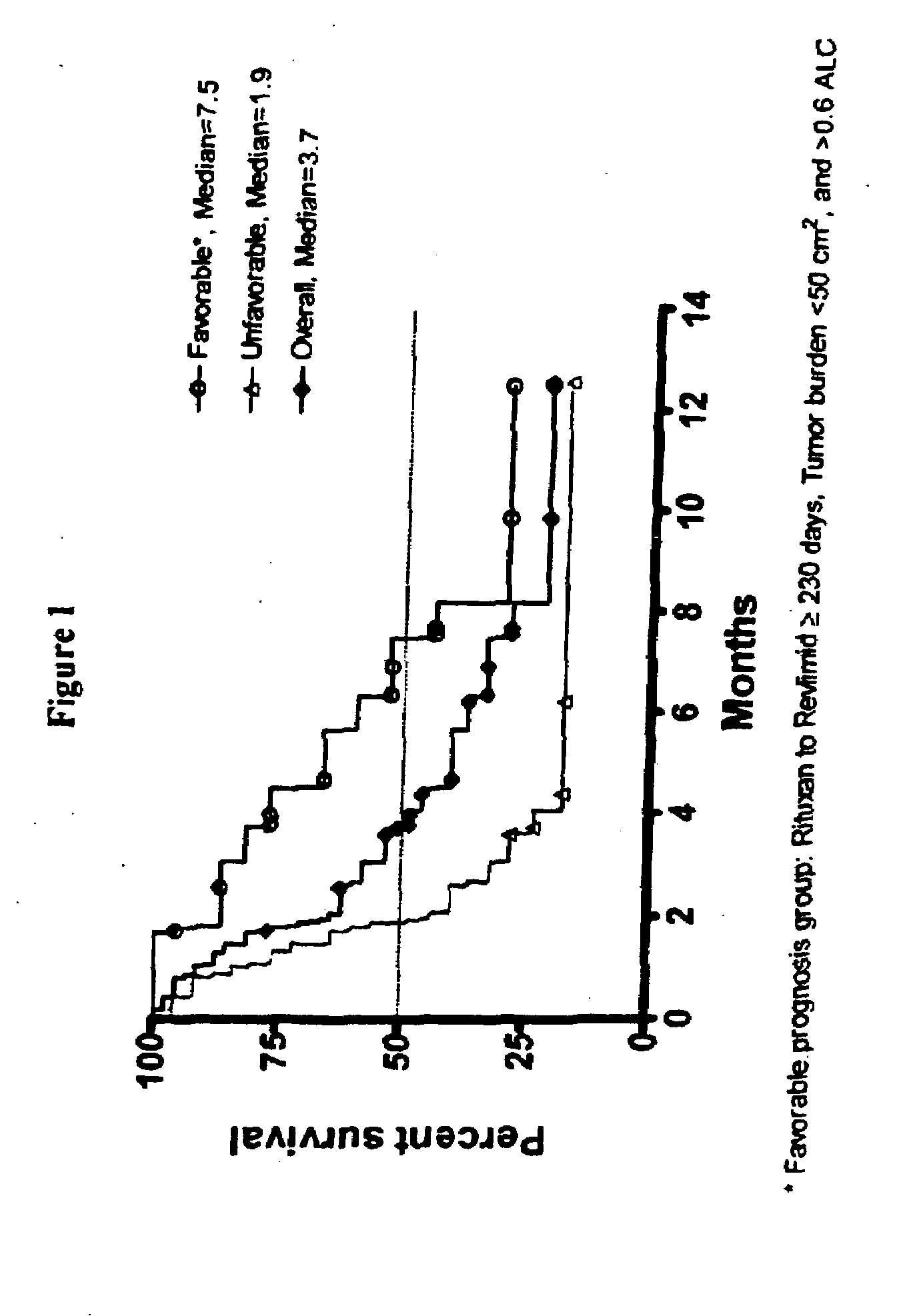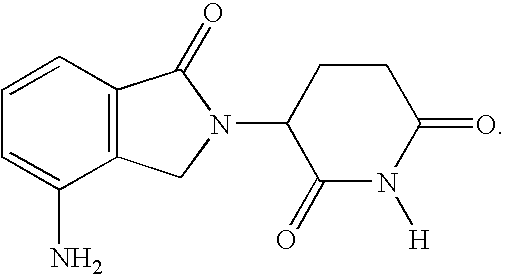Methods for treating lymphomas in certain patient populations and screening patients for said therapy
a technology for lymphomas and patient populations, applied in the field of lymphomas treatment methods, can solve the problems of poor survival rate of lymphomas, unsuitable for patients with poor performance status or advanced age, and achieve the effect of increasing the response ra
- Summary
- Abstract
- Description
- Claims
- Application Information
AI Technical Summary
Benefits of technology
Problems solved by technology
Method used
Image
Examples
Embodiment Construction
[0021]A first embodiment of the invention encompasses methods for identifying or selecting cancer patients for treatment with 3-(4-amino-1-oxo-1,3-dihydro-isoindol-2-yl)-piperidine-2,6-dione which encompass measuring disease (tumor) burden, absolute lymphocyte count (ALC) and time since last rituximab therapy, and treating patients having favorable values of one or more of the factors with 3-(4-amino-1-oxo-1,3-dihydro-isoindol-2-yl)-piperidine-2,6-dione.
[0022]Also encompassed by the invention is a method for predicting a lymphoma patient's response to a therapy regimen of 3-(4-amino-1-oxo-1,3-dihydro-isoindol-2-yl)-piperidine-2,6-dione, using one or more prognostic factors of disease (tumor) burden, absolute lymphocyte count (ALC), and time since last rituximab therapy.
[0023]One embodiment of the invention encompasses a method of treating or managing a lymphoma, which comprises administering to a patient having a lymphoma a therapeutically effective amount of 3-(4-amino-1-oxo-1,3-di...
PUM
| Property | Measurement | Unit |
|---|---|---|
| diameter | aaaaa | aaaaa |
| time | aaaaa | aaaaa |
| median time | aaaaa | aaaaa |
Abstract
Description
Claims
Application Information
 Login to View More
Login to View More - R&D
- Intellectual Property
- Life Sciences
- Materials
- Tech Scout
- Unparalleled Data Quality
- Higher Quality Content
- 60% Fewer Hallucinations
Browse by: Latest US Patents, China's latest patents, Technical Efficacy Thesaurus, Application Domain, Technology Topic, Popular Technical Reports.
© 2025 PatSnap. All rights reserved.Legal|Privacy policy|Modern Slavery Act Transparency Statement|Sitemap|About US| Contact US: help@patsnap.com



